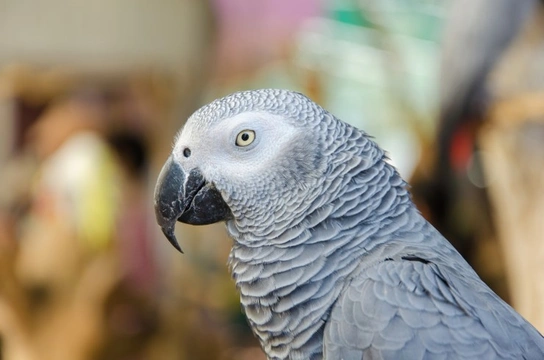
Important changes to the CITES regulations for Timneh and African grey parrots
If you own any type of parrot or exotic bird, you are no doubt already aware of the CITES (Convention on International Trade in Endangered Species of Wild Fauna and Flora) regulations, which are designed to protect a wide range of different animal and plant species (and their natural habitats) that are endangered or at risk of extinction.
The CITES regulations mean that for many popular species of parrots and other pets, the owner of the animal in question must be in possession of the appropriate paperwork to prove that their pet is legally owned, and that they were not caught, handled or sold into the pet trade in such a way that might endanger the wider population.
The CITES regulations are divided into annexes that dictate the different levels of protection (and so, regulations) that apply to each individual species covered, and currently, the African grey parrot and the Timneh parrot fall under the remit of Appendix 2/Annexe B of CITES.
However, signatory members of the international CITES commission recently voted to upgrade the Timneh and the African grey to Appendix 1, which may have an impact on anyone in the UK who owns, sells or is considering buying a parrot from one of these two species.
In this article, we will look at the CITES regulations pertaining to these two parrot species in more detail, including what the change will mean for owners, breeders and potential buyers of parrots of this type. Read on to learn more.
What is CITES?
CITES in an international agreement that was made between nearly two hundred member countries, designed to protect endangered plants and animals and their natural habitats. As well as protecting these species and their natural environments, CITES also monitors and regulates the trade in such species, to ensure that the ownership of affected pets and animals by private individuals does not further impact upon the welfare of the wider species in the wild.
Many different parrot species are covered by the CITES regulations, and depending on the degree of threat perceived to be facing each species in the wild, different levels of monitoring and regulation are applied as appropriate.
These regulations are divided up into appendices, and currently, the Timneh and African grey parrot species are covered under Appendix 2. Appendix 2 covers plants and animals that are not imminently at risk of extinction, but that require safeguards to be put into place pre-emptively in order to ensure that they do not become at risk in the medium term future.
For the owners of birds covered by Appendix 2 (like the Timneh and African grey parrots) this means that all birds of these species must have been legally attained (if taken from the wild) and issued with an export permit to prove this. Because few parrot owners actually source their own birds from the wild directly, this means that as long as you check that any necessary paperwork is in order when you buy or sell your bird, you do not need to do anything else.
Upcoming changes
Every two years, the CITES committee meets to discuss the species that they represent, assess if they are all still protected by the most relevant regulations, and identify whether any species may need to be upgraded or downgraded to a different level.
During the latest CITES conference (held in October 2016) the committee cast a majority vote to see the African grey and Timneh parrots upgraded from Appendix 2 to Appendix 1. However, this change was not enacted within the usual 90 day period CITES works within, as DEFRA (the UK’s liaison body and management authority for CITES in the UK) is currently awaiting directions from the EU as to whether or not European Union authorities will require a further form of European licence for captive-bred birds.
Understandably, the upcoming BREXIT instigation has left many people unsure about how EU law will or will not apply in the UK after we leave the union. However, because the exit process is likely to take a couple of years it is highly unlikely that the UK will bypass oversight by EU law in terms of this change, although the change itself may take many months to come to pass fully.
How this will impact owners, breeders and buyers
For current owners, breeders and buyers of African grey or Timneh parrots, it is wise to ensure that you take the necessary steps to comply with the upcoming changes in status, which are almost certainly guaranteed to be mandated into the regulations.
When advertising CITES species on the Pets4Homes classifieds listing, we will of course take all necessary steps to ensure that birds advertised via our platform are being sold or traded in accordance with both the letter and the spirit of the regulations. Ergo, we will require all sellers of such birds to state that they have the appropriate paperwork in their adverts.
Ultimately, any currently owns African grey or Timneh parrots will fulfil the remit of the new Annexe assuming that their birds bear closed leg rings with the appropriate ID markings, and birds without closed leg rings will require additional paperwork and traceability. A suitable alternative to the closed leg ring identifier is possession of an import or captive breeding certificate and supporting documentation, accompanied by a matching microchip number to prove that the bird was legally obtained.
It is also important to note that if you breed and sell parrot chicks from either of these two species, the provenance of the parent birds also needs to comply with these guidelines, even if the adult birds are not offered for sale themselves.



